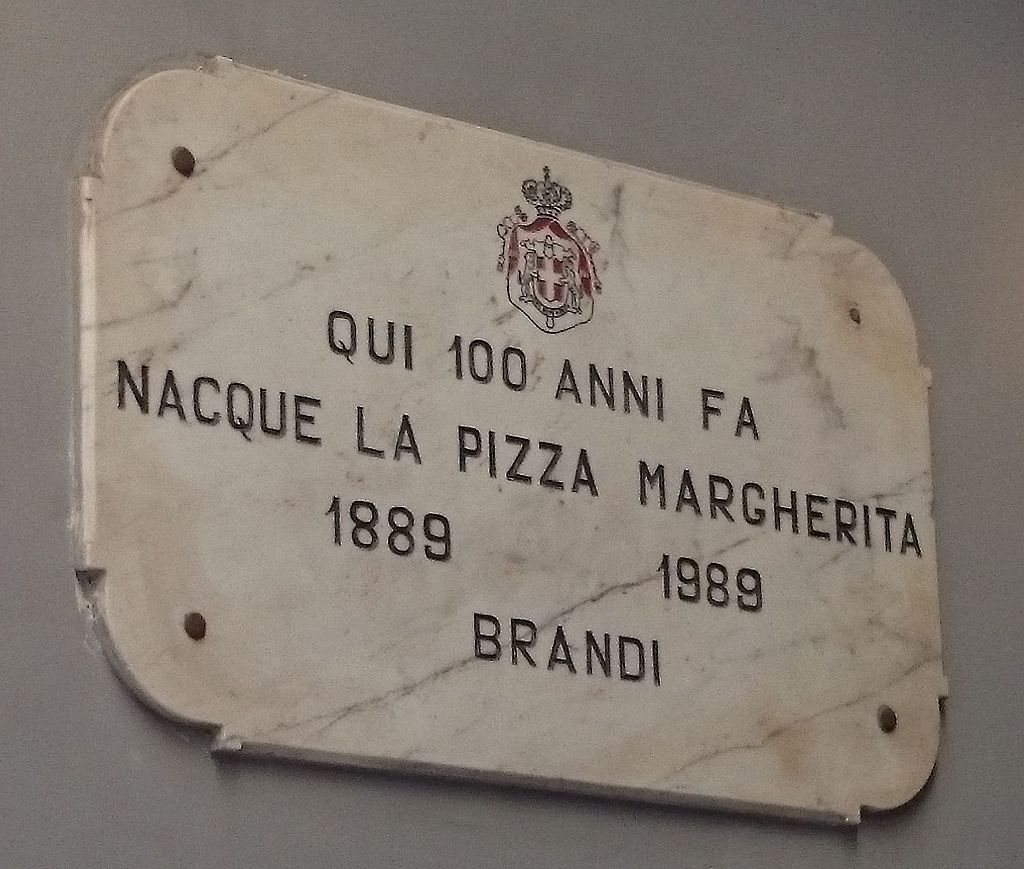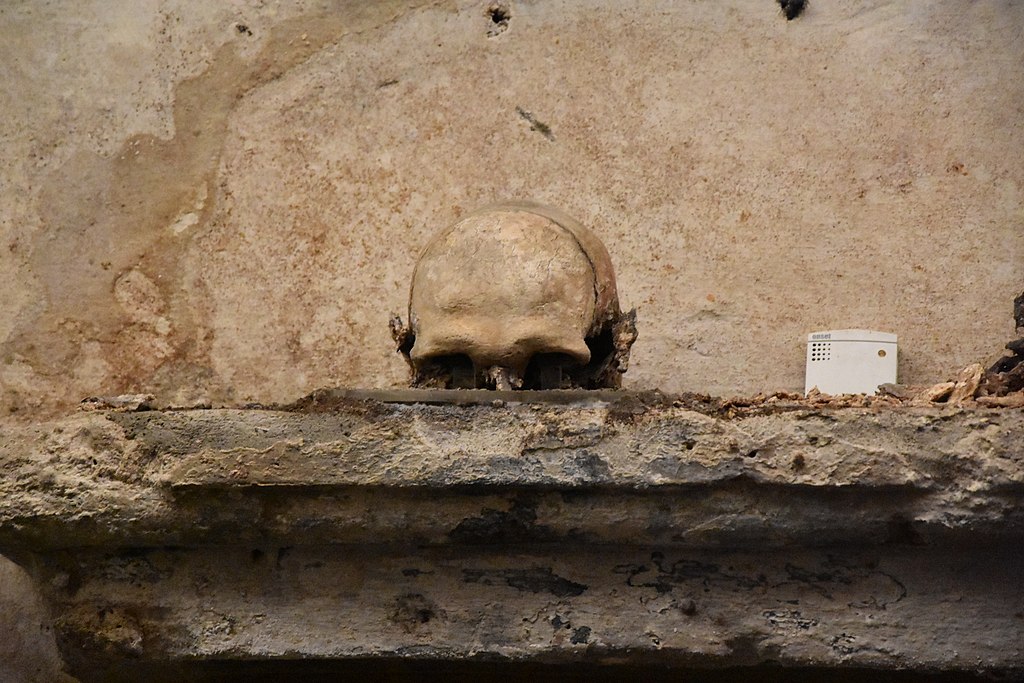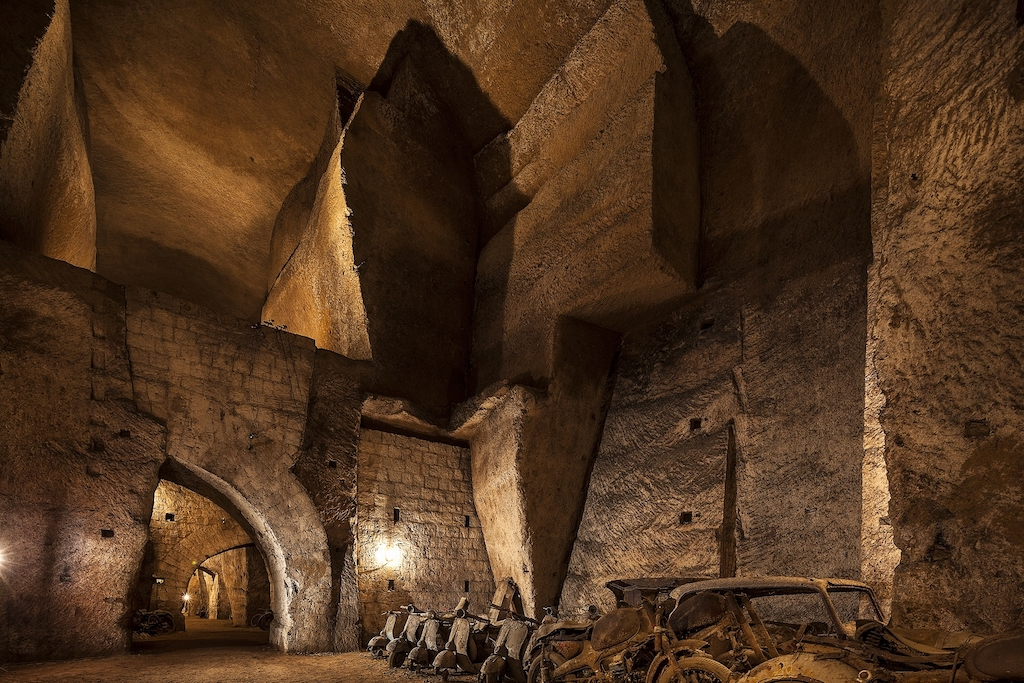Naples is a seriously underrated city. Travelers often bypass this bustling southern Italian metropolis on their way to Pompeii. It’s their loss. Italians often say that Rome is the heart of Italy and Naples is its soul.
And soul it most certainly has. This city of three million passionate denizens feels like a city on another continent. It’s sensory overload. But there are ample amounts of things to see. Especially if you’re into offbeat sites. Naples has them in spades. Here are 8 of the best, offbeat and unusual things to see in Naples.

Anatomy Museum at the University of Campania
If you like a dose of morbid curiosities to go along with your travels in Italy, head to the Anatomy Museum at the University of Campania. This fascinating museum, which first opened toward the end of the 18th century, boasts displays of cyclops heads, deformed babies, and various displays of diseases. Fun stuff! Entrance is free but it’s necessary to book via the museum’s website.
Plaque commemorating the birthplace of Margherita pizza
The plaque in a little Centro Storico alleway near Piazza del Plebiscito reads: “Qui 100 anni fa, nacque la pizza Margherita — 1889-1989” or in English, “Here 100 years ago, the Margherita pizza was born.” Apparently, the pizza really was invented here by chef Raffaele Esposito in honor of Italian unification, which influenced the choice of ingredients: basil, mozzarella, and tomato sauce; green, white, and red—the colors of the Italian flag. Today, of course, pizza is probably the most popular and widespread food on the planet. And it all started in this little alley.

Traveler’s tip: Everyone who visits Naples usually seeks out authentic Neapolitan pizza. But if you’re really looking to find the best in the city, check out our list of the best pizza in Naples.
Cathedral of the Assumption of Mary
Also known as the Cathedral of Saint Januarius, the towering 13th-century cathedral is worth a visit. But if you like holy relics, put the church on your itinerary. That’s because it is here where a vial of blood of St. Januarius—known as Gennaro, in the local parlance—liquifies on a regular basis. Well, traditionally the dried blood liquifies three times per year. If it doesn’t, it signals to locals that something bad, such as famine, war, or natural disasters are going to happen. The blood refused to liquify during the recent pandemic. Coincidence? Maybe. Maybe not.
Church of Santa Luciella ai Librai
Tucked away in the Centro Storico, Santa Luciella ai Librai has plenty of lovely artifacts, including gothic portals and Baroque paintings. But the reason most people gravitate to this 14th-century church is for what is in the crypt: a skull with ears.
That’s right. The 17th-century skull is something of an anomaly as the ears mummified instead of rotting away as they usually do. The pious would come here to pray to the skull, thinking that since it had ears it could hear their prayers and relay them to the heavens.

Gabinetto Segreto
If you’re heading to Naples’ fantastic National Archeology Museum, point yourself up a floor to the mosaics collection and look for the cabinet. Here you’ll find the intriguing Gabinetto Segreto, or the Secret Cabinet. In the 19th century when excavations began at Pompeii, archeologists deposited some of their findings in this museum. And those objects that made one blush? They went into this cabinet, which was off limits to anyone but a few museum employees.
Fortunately today, visitors can get a peek inside to spy the ancient phalluses and pornographic mosaics. One of the most famous pieces is a carving of a satyr having sexual congress with a female goat.
Naples Underground
Starting about 2,500 years ago, Greek colonizers began digging underneath their newly founded colony, known as Neapolis, or New City. Over the course of the last two and a half millennia, some 280 miles of tunnels underneath Naples have been dug.
Twenty-first century visitors to Naples can explore some of these tunnels with Napoli Sotterranea, or Naples Underground. Descend about 120 feet below the surface to gawk at cisterns, ancient aqueducts, centuries-old sewers, and even the remains of an old Greco-Roman theater.

Santa Maria del Anime del Purgatorio ad Arco
If you wake up one day in Naples and feel like going to pray for the souls stuck in Purgatory, you’re in the right place. Just point yourself to the mouthful of a church named Santa Maria del Anime del Purgatorio ad Arco—Saint Mary of the Souls of Purgatory—where for centuries the faithful have been going to pray for souls in the limbo of the afterlife.
The church is an anomaly because it’s actually two sanctuaries stacked on top of each other: one in the basement and one on ground level. The basement of this 17th-century church was filled with dead bodies after the Black Plague tore through Naples just after the church had been built. Today, visitors can descend into the cellar to see the macabre sight of skulls everywhere.
Via dei Presepi
Are you crazy for Christmas? The Via dei Presepi – which gets our vote for another one of the most unusual things to do in Naples – is a street in the Centro Storico that will give you your nativity fix and then some. Known officially as Via San Gregorio Armeno, the street is a giant 24/7 nativity scene. The tradition started in the 13th century when St. Francis of Assisi created the first nativity scene.
It took a few centuries, but presepi, or nativity scenes, became big in Naples and Italy. Today, they’re a common sight all around the country in December and the beginning of January. But on this street in Naples, you can get in the Italian Christmas spirit June or July or any month of the year.

Ready to turn your trip into an unforgettable experience?
Discover the full range of expertly led experiences at Take Walks Tours where passionate local guides bring history, stories, and iconic sights to life. From world-famous landmarks and museums to immersive food and cultural experiences, these small-group guided tours offer deeper insight, seamless access, and unforgettable moments you’d miss on your own.
Explore with experts who know it best, and see the country through local eyes.
